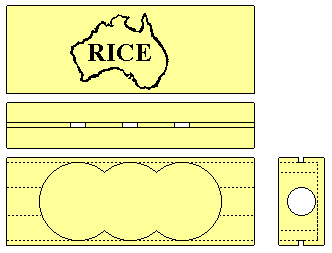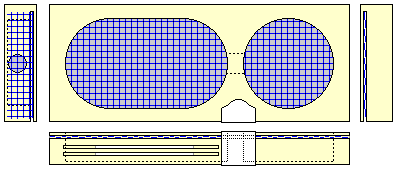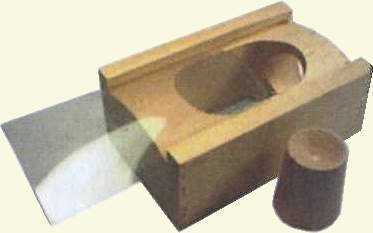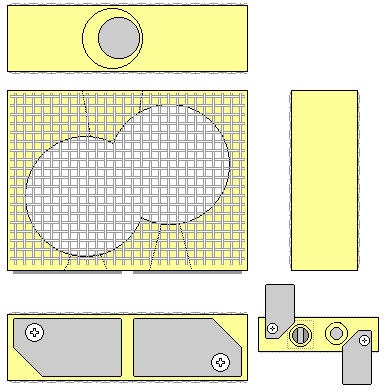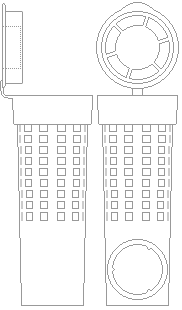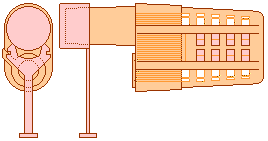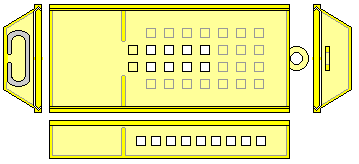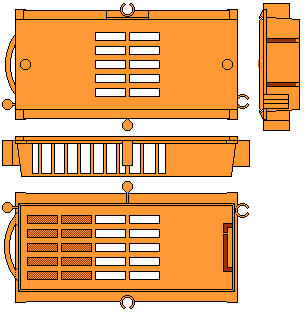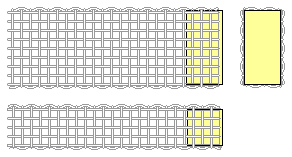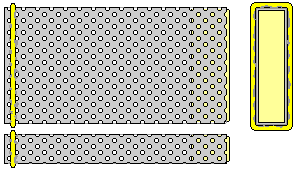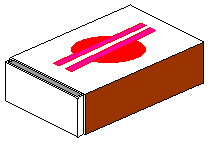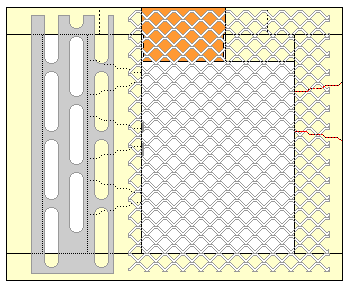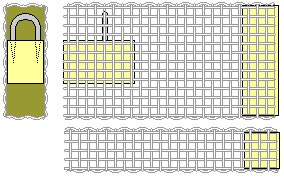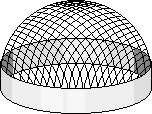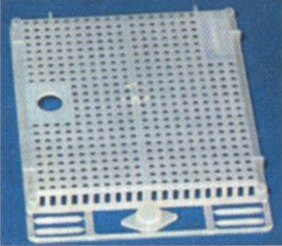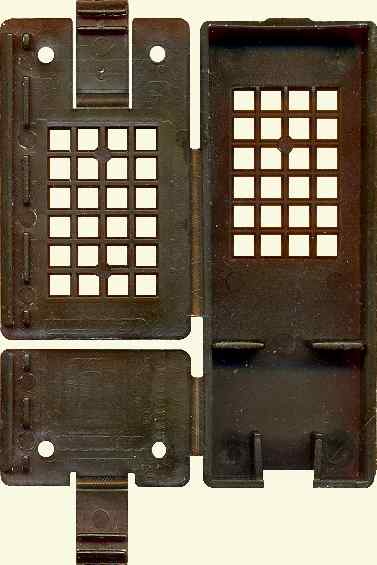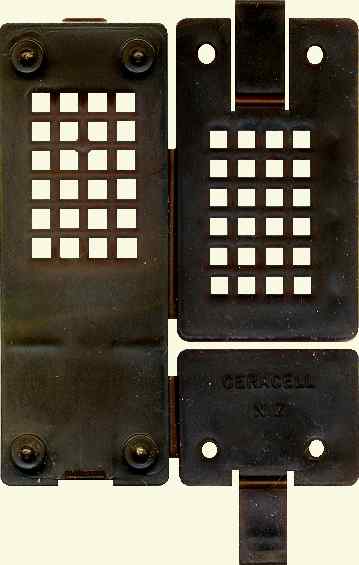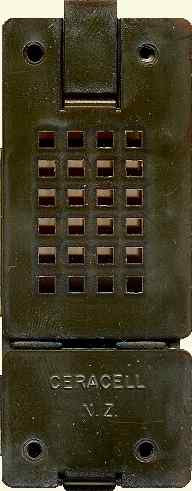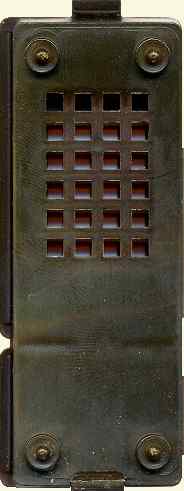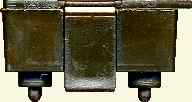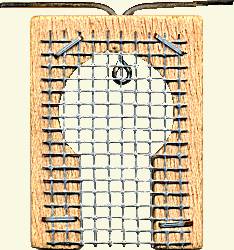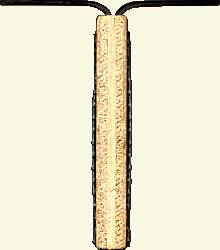3 hole Benton cage
This is the traditional one, usually made from basswood (lime or Linden), that most beekeepers will recognise. It was described in a beekeeping journal in Australia as early as March 1889, but information from Joe Waggle indicates an even earlier date... April 01, 1885 reported in the Waterloo Courier, Iowa.
"The Problem of sending queen bees by mail across the Atlantic has been successfully solved. Frank Benton, of Munich, Germany, reports in Gleanings in Bee Culture that he has sent many queens to America during the past season with only two or three losses."
Dimensions are 75 mm x 25 mm x 16 mm. Mesh size varies from 8 mesh to 20 mesh.

